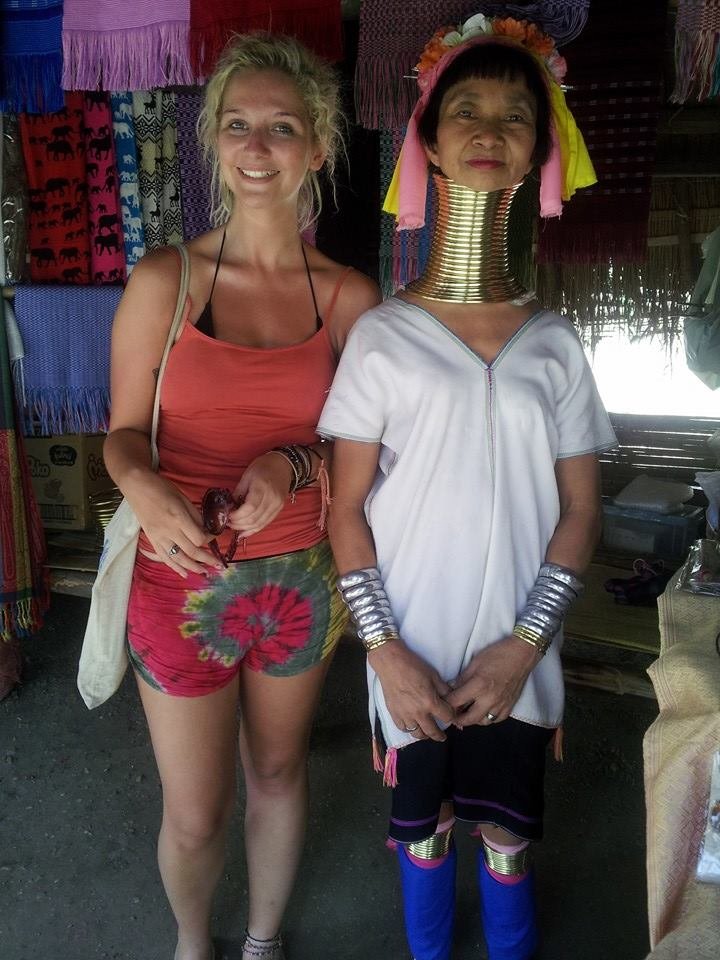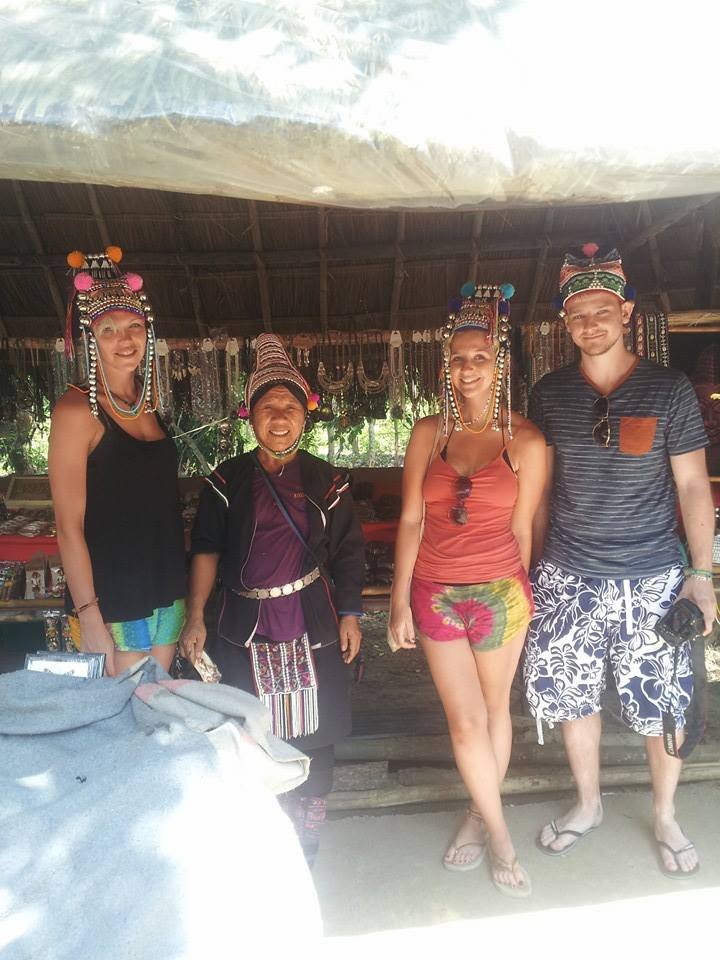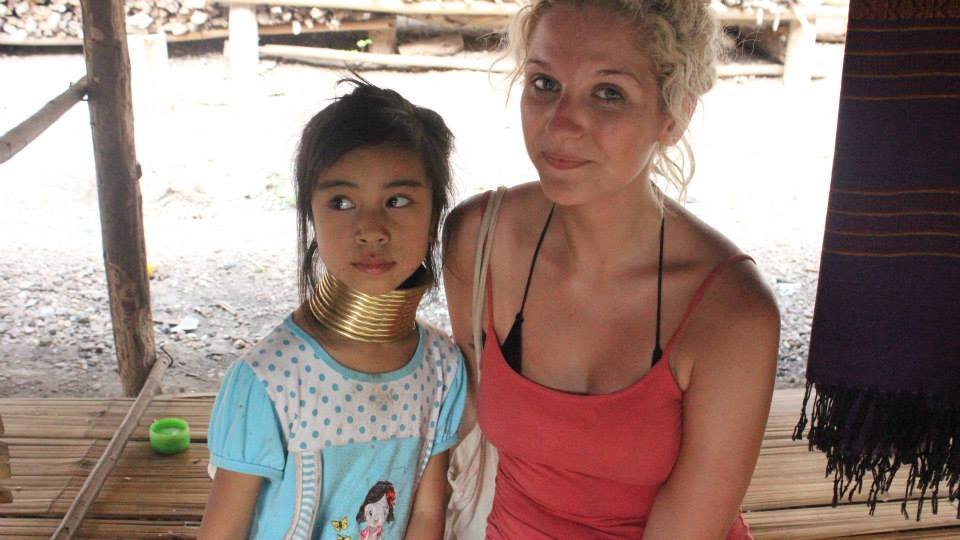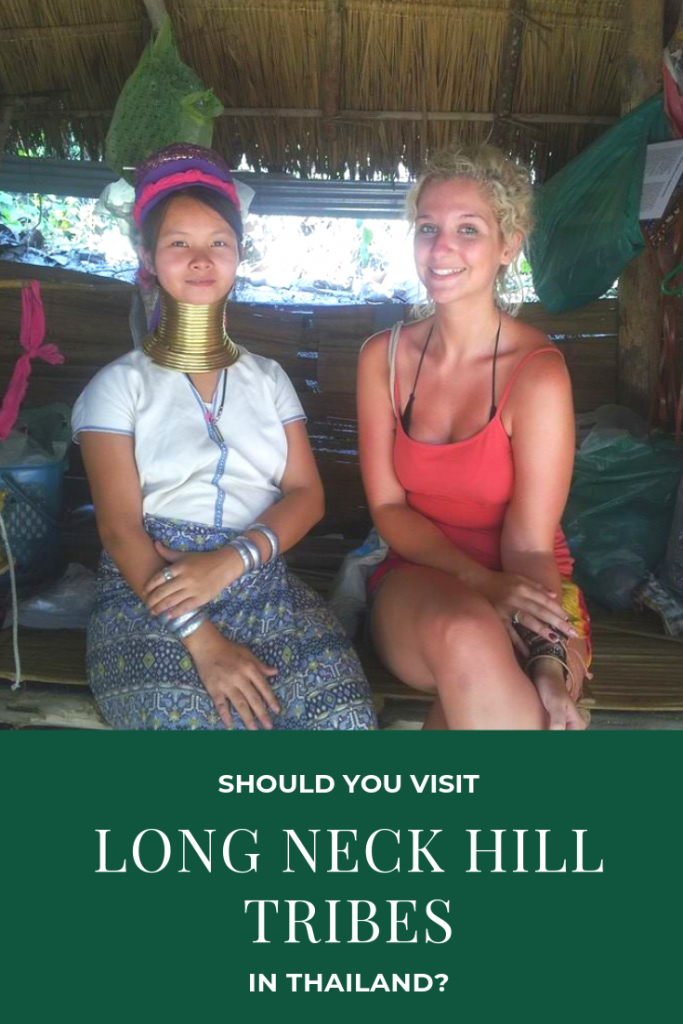Visiting a Long Neck Tribe, Thailand – All You Need to Know
‘Should I visit a Long Neck tribe in Thailand?’ has to be one of the most common questions backpackers ask themselves when they are planning their trips to Thailand.
Much has been written about the controversial ‘Long Neck’ tribe villages online, with many travel bloggers urging people not to visit them, warning that they are exploitative human zoos where women have no choice but to wear the infamous brass rings around their necks to attract tourism.
However, is there any truth to this? Are visits to the Long Neck villages unethical?
I decided to find out…

How to Visit a Long Neck Tribe Ethically
Who are the Long Neck women?
The people of the Long Neck hill tribes in Northern Thailand are not native to Thailand.
They are actually refugees from Myanmar, where they faced violence, war and persecution. Because of their refugee status in Thailand, their freedom is restricted and they do not have many employment opportunities.
The so-called ‘Long Neck’ women are from the Kayan tribe, which are a sub-group of the Red Karenni group. They are a Tibeto-Burman ethnic minority of Myanmar.
When Thai government officials saw the Kayan women on their doorstep, they saw a great business opportunity for Thailand’s tourism industry, and so they gave them visas and work permits, leased them some land (the villages you see today) and began marketing the new Long Neck Villages to tourists.
Why do the Long Neck women wear the rings?
Some of the women and girls in the Long Neck tribe villages wear heavy brass rings around their necks, which are the reason why they have attracted so much tourism and media attention over the years.
Traditionally, girls begin with a brass ring around their necks at around the age of 5 and add one ring every year until they are 21.
Contrary to popular belief, the girls are not forced to wear the rings for tourists – they can decide for themselves whether they want to partake in the tradition or not – and many girls are now choosing not to wear them.
The girls that do wear the rings say that they feel a sense of identity from them, which have strong links to their culture, heritage and family, and they also welcome the additional income that the wearing of the rings inevitably brings. In fact, in high tourist season, the Long Neck women can expect to earn up to ten times more than their husbands!
The origins behind the brass rings aren’t clear.
Legend has it that the women began to wear the rings to protect themselves from tiger attacks (tigers usually go for the neck), and other theories say that the rings were supposed to make the woman unattractive to other tribes so that they wouldn’t be enslaved by them.
These days, the Long Neck women wear the rings because long necks are seen as beautiful, and because they feel a sense of cultural identity.
It has been widely reported that the women will die due to their weakened necks snapping if they remove the rings but this isn’t true.
If a woman does decide to remove her neck rings, she will go through a period of discomfort for a few days but nothing more.
It is also a myth that the neck rings actually elongate the neck – they simply push down the collarbone and clavicle to give the appearance of such.

What should you expect if you visit a Long Neck tribe village?
The villages were erected specifically for tourists.
This doesn’t make them inauthentic – the brass rings, costumes, handicrafts and living quarters are all traditional, but just bear in mind that this isn’t so much a ‘cultural experience’ as it is a tourist attraction.
On entering the village, you’ll pay the entrance fee (when I went in 2015 it was 500 THB or £10).
This seems expensive, but some of this fee goes towards the women’s base salaries (which we were told were 1500 THB a month at the time), some goes towards the maintenance of the villages, and some goes towards the upkeep of Kayan refugees in Thailand.
I think that it is fair to charge tourists to enter the village as most people visiting a Long Neck tribe will not purchase any souvenirs, and so the entrance fee is a way of ensuring that the inhabitants definitely make money.
The village is then essentially one big market. The Long Neck women weave traditional garments and talk amongst themselves as they sit at the stalls outside their homes. Almost every stall sells the same traditional costumes, scarves, jewellery and ornaments, made by the women themselves.
The women make their money from the entrance fees, commission from organised tours, profits from their handicrafts or photo opportunities (when I was there, the women were not charging money for photos but lots of people would give a small donation in exchange for a photograph).
It is also possible to spend the night in one of the bamboo huts with a local family, which is something that a lot of tour companies offer. These homestay experiences are another way in which the Long Neck women earn money, and provide a more meaningful exchange between local and tourist.

Should you visit a Long Neck tribe village?
Despite blogger’s concerns over the Long Neck hill tribe villages being human zoos and urging backpackers to boycott them, I believe that it is important to listen to the voices of the women themselves, and what they want.
After all – visiting a Long Neck village is not the same as going to watch a Ping Pong show, which is inherently exploitative.
Eric over at Thailand Hill Tribe Holidays says that over the years he has spoken to many of the women living in the Long Neck hill tribe villages, and found that they are happy for tourists to visit because the money that they spend provides a vital source of income for them, and not only allows them a better quality of life than they would have in a regular refugee camp, but also a better quality of life than back home in Myanmar.
It is true that migrant workers in Thailand do not have the same rights as Thai nationals, with their movement between provinces often restricted and their wages significantly lower, but this issue is not unique to the Kayan people, or even refugees as a whole.
It applies to all migrant workers, and so in my opinion, the fact that the Kayan people’s culture can be turned into a valuable commodity in the form of a tourist attraction is a good thing for them, at least until the laws change in Thailand and migrant workers afforded the same rights as Thai nationals.
It is very easy for Western readers to take offence, and to see this commodification of a culture as immoral, but this is just not how the women in the Long Neck villages see it.
Ma Ja, one of the Long Neck women, says that ‘In the beginning [when she moved to Thailand aged 11], I did not understand why they have to let tourists come in and visit us. Later I understand the reasons, it’s because we have a different culture which people from the outside want to know about. On the plus side, by having tourists coming in, it creates jobs for us and we have income in our families from selling souvenirs to them. Selling souvenirs has become our source of income because we do not have any other recourse. If there are no tourists coming in, we would not know what to do.’

How to visit a Long Neck tribe village ethically
Although I’ve made it clear that I see no major reasons to boycott the Long Neck tribe villages of Northern Thailand, that isn’t to say that there aren’t some pointers to take into consideration if you want to make your visit as respectful and ethical as possible.
As with any tourist attraction, treating it in the wrong way can lead to exploitation, and so it is important that we are mindful of how to behave in a Long Neck tribe village.
Here are some general guidelines on how to visit a Long Neck village ethically:
1. Buy souvenirs
If you just wander around the market snapping pictures and gawking at the women, then yes, you are kind of acting like you’re at a human zoo.
However, if you buy a small souvenir to take home then you are not only buying a traditional memento of your time there, but also helping to support the women and their families.
2. Hire a local guide
Not only will hiring a local guide give you a much deeper insight into the culture and history of the Kayan people, but it will also allow the guide to increase their income and practice their English.
3. Try a homestay experience
Not only is this a welcome addition to your host family’s income, but it is also a great opportunity for a more meaningful cultural exchange, opening the door for deeper conversations than you would have if you just wandered around the market in the daytime. This also allows the host family to practice their English.
4. Ask before taking pictures!
The villagers in the Long Neck hill tribe are not animals.
It is extremely ill-mannered to take photographs of anyone without their permission, and the Long Neck women are no exception. If you do want to take a picture of the women then just ask politely and they will be happy to accept.
5. Don’t go into homes uninvited, touch the women without permission or touch any spirit catchers of religious symbols
In the case of the latter, villagers believe that touching these things will bring bad luck upon them, so it is important to be aware of this.
In the case of the former, just live the way you would at home – you wouldn’t go around hugging or entering the homes of strangers back in your home country, so don’t do it in someone else’s!

So, should you visit a Long Neck tribe?
I am of the belief that there is no harm in visiting a Long Neck hill tribe village in Thailand, as long as you visit with a reputable company (do your research first) and act respectfully while you are there.
Long Neck tribe villages are not human zoos. They are homes and workplaces for refugees who would struggle to survive without the money that they make from tourism.
What do you think? Do you agree with me, or do you think that the Long Neck hill tribe villages are exploitative? Please let me know your thoughts in the comments section below!
Further Reading
Tips for Travelling in Southeast Asia
Scams to Avoid in Bangkok
If you liked this article and would like to support my work, please click the button above to donate a couple of bucks and buy me a coffee. The ad revenue that I receive on this website is minimal, so support from my readers enables me to keep creating content that you (hopefully!) love to read.



Wow this is very informative write up ,I never knew so much about it but had seen pics.thanks for sharing
This was an interesting read! Thank you for sharing your experience. It was nice to have another perspective on visiting here beyond all of “the human zoo” publicity I had been seeing.